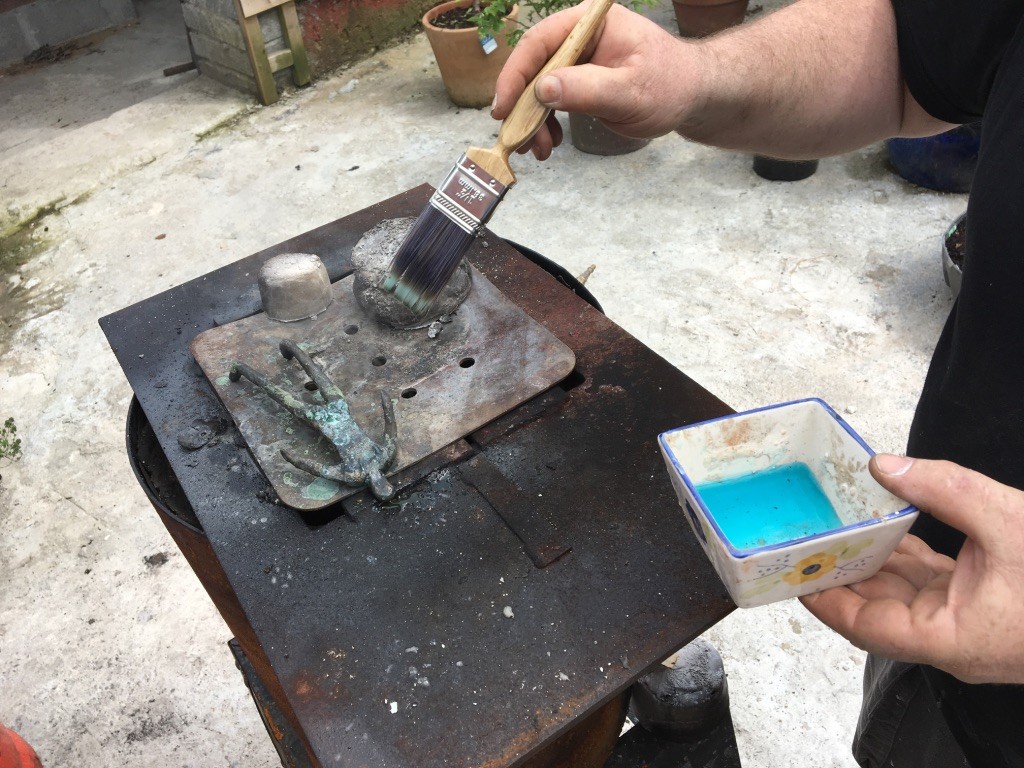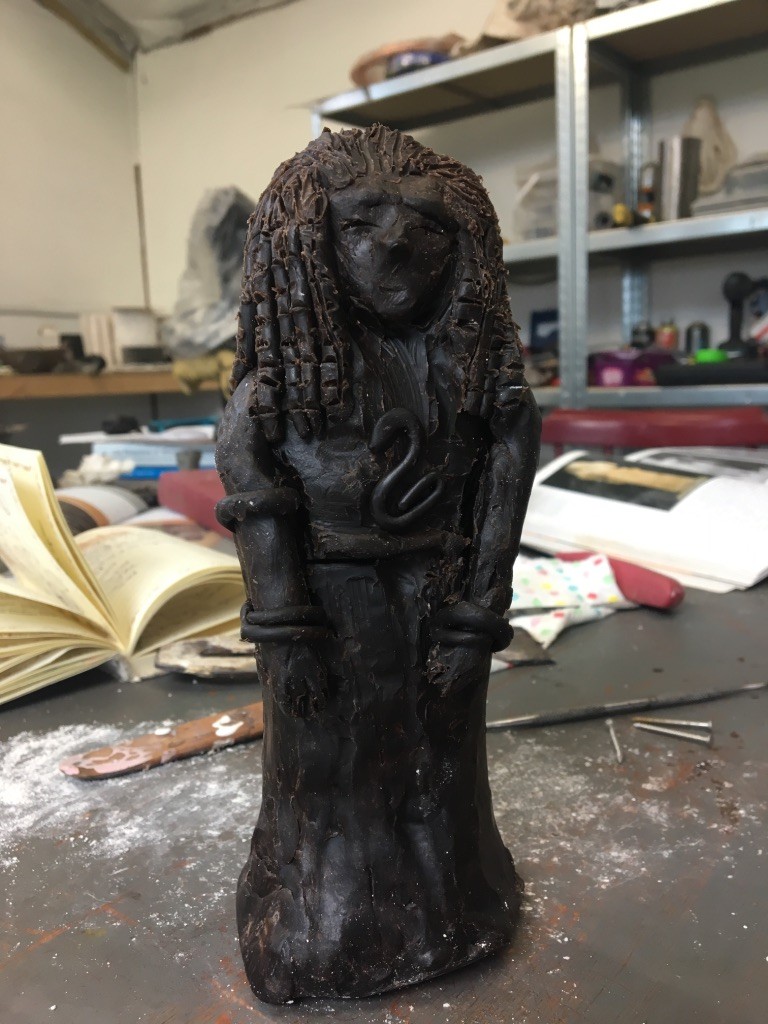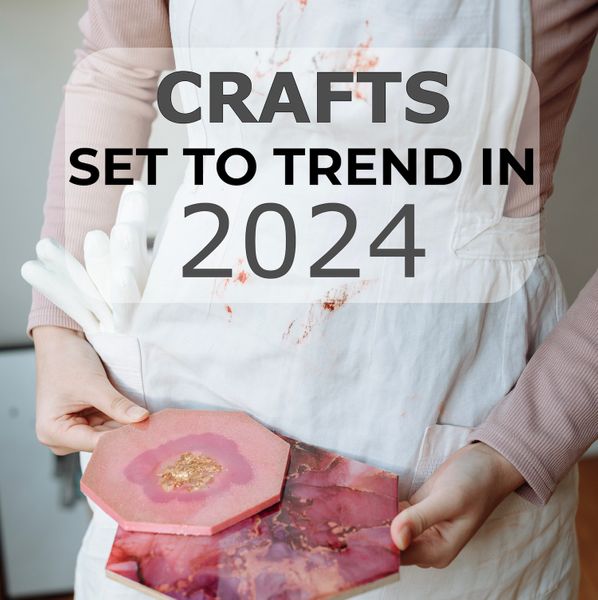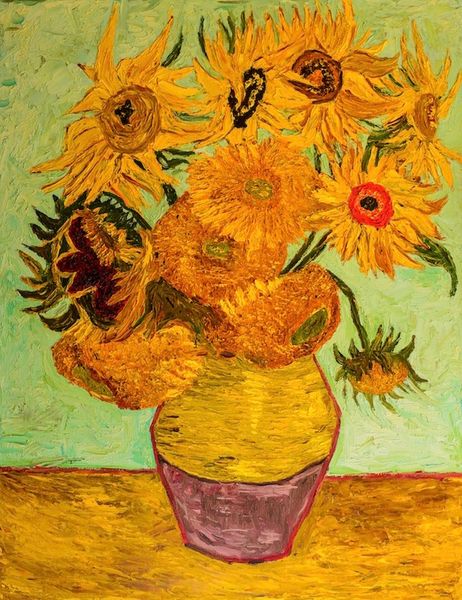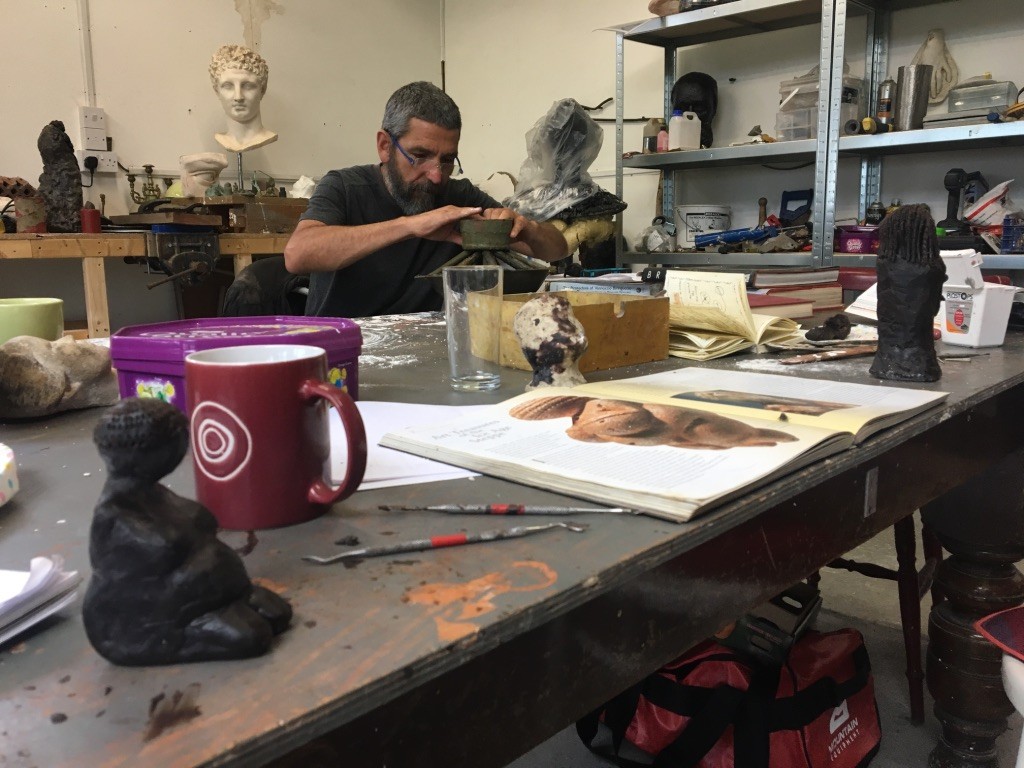

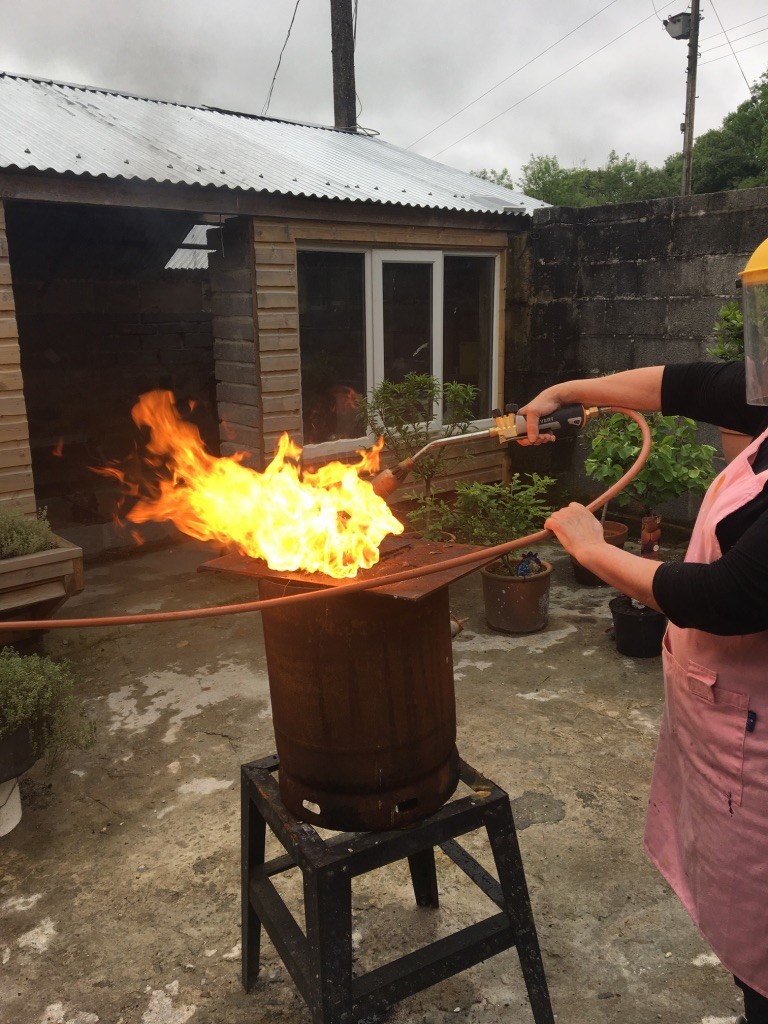
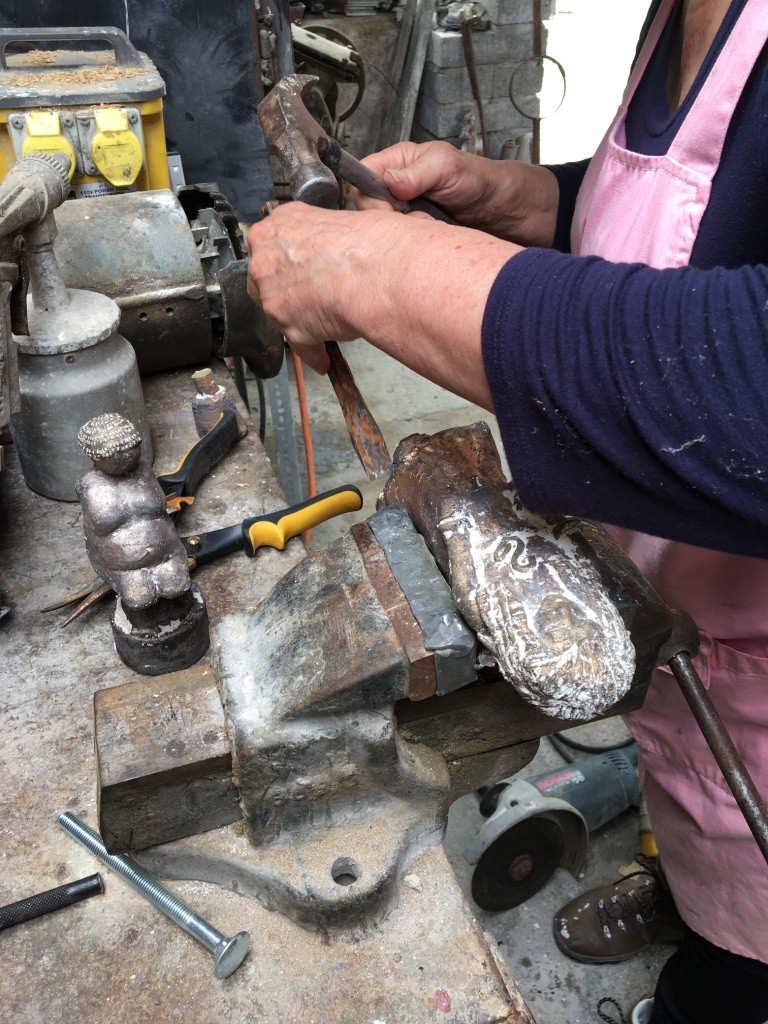

New British Art is based on a beautiful old farm in rural Carmarthenshire in West Wales, close to the Botanical Garden of Wales and handily, right of the M4. Kate Dewmartin from CraftCourses.com spent a glorious weekend learning about the ancient method of casting in bronze. Full details and booking here.
The setting is a charming hodge podge of buildings all dedicated to the sculpture and printing workshops run here. There is the furnace room, the courtyard, the drying room and the comfortable library and inspiration room where we do our sculpting, enjoy the views and drink many cups of tea.
Caroline is there to welcome us and introduce us to our tutor and her partner, the artist and sculptor Mark Halliday. Mark was head of Art at Cardiff University for over a decade and is an enthusiastic and entertaining tutor, full of anecdotes and nuggets of information.
Mark teaches these courses in small groups and there are two other participants; Ginger Da Solva, an American Professor of Fine Arts and a Fulbright scholar to boot and Quentin, a chef and maker of beautifully resonant singing bowls (normally using sheet metal).
Mark starts with an introduction to the Lost Wax Process, otherwise known as ‘Italian method casting’; the same technique used to create all of the Great Renaissance bronzes. In essence, an object is sculpted in wax and a strong, heat resistant ceramic or plaster cast or mould then constructed around it. The wax is burnt away (lost) and the resulting hollow filled with bronze. Larger objects are constructed first, covered and shaped with wax and then further coated in the mould so that the resulting bronze is hollow.
We can make two pieces each and I decide on a small horse figurine, based on those painted at the prehistoric Lascaux Caves and a Mother Earth/Goddess figurine. Ginger shares my fascination with the Stone Age and makes a Celtic boar (which we dub the ‘boarosaurus’) and a fabulous Lady of Auxerre figurine. Quentin makes a Giocometti-style male figure and casts a singing bowl. Sculpting the clay is great fun and the day passes quickly as we become absorbed in creating.


Once the sculpting is done we start coating our pieces with layers of ceramic shell (Molecite) of varying coarseness in order to build up enough strength to withstand the furnace and molten bronze.
Losing the wax is achieved with a bloody great blow torch, then it is time to fire up the furnace and get the pieces ready for pouring the bronze. This is done by hand and two of us use a metal frame to lift and pour the cauldron of molten bronze. Not a job for the faint-hearted!
After cooling, we can start the process of knocking off the plaster to see if the bronze casting has worked. Mark explains that there are always surprises at this stage.
The final stage is chipping, sandblasting and washing off all of the remains of the ceramic mould and applying a finish. I chose a polished and buffed bronze finish for my Earth Mother and then for a contrast the ‘just dug up look’ acquired by painting on copper oxide for my horse.
It’s been a terrific weekend, I am tired but content as I drive home through the Welsh Hills, inspired by the experience of creating in the manner of ‘The Ancients’ and also by the great company and talent of Mark, Caroline, Quentin and Ginger.
The courses run monthly and are extremely popular so get your name down now!
Thank you all at New British Art for this never-to-be-forgotten opportunity!

